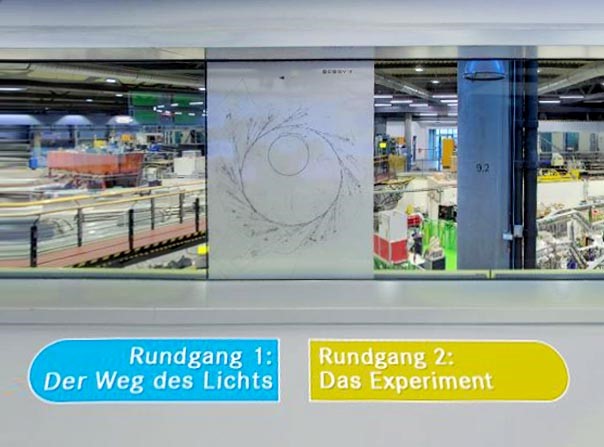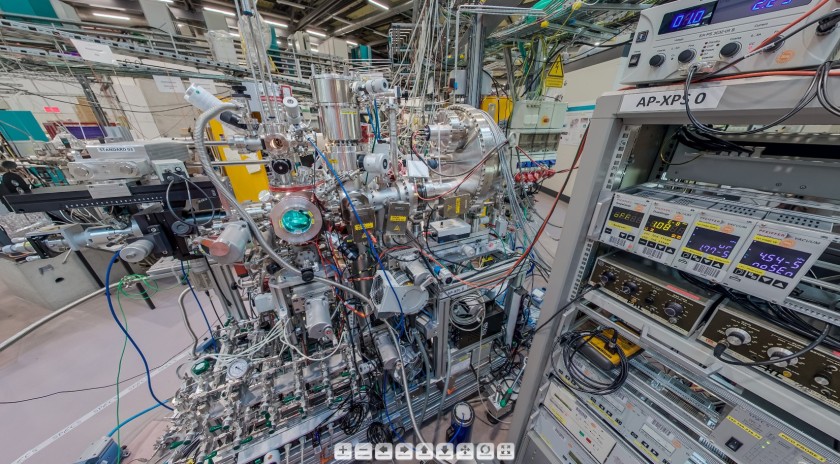Virtual visits at HZB and 360° Panorama

We now also offer virtual tours. © HZB

Many HZB laboratories do offer a 360° panorama. © HZB
Due to Corona, it is currently not possible to welcome groups of visitors at HZB and guide them through the facility. Nevertheless, we open our doors virtually for you and provide insights into research facilities and labs at HZB. Make yourself comfortable and start your own virtual tour through BESSY II. Move through 360-degree images, have a look and linger at selected stations.
BESSY II: Follow the path of light
Have you always wanted to walk through an accelerator? Then let's get started! The two tours "The Path of Light" and "The Experiment" start in the control room of BESSY II. Continue to the place where electrons race through and emit light at almost the speed of light - the storage ring tunnel. Follow the light and see how we experiment with it.
Enjoy the digital tour!
Tours Wannsee site
At the HZB Wannsee site, for example, we are investigating novel catalyst materials needed for the generation of hydrogen with sunlight or the electrochemical conversion of carbon dioxide into fuels. We are working on better battery systems and analyzing materials with different X-ray methods. In cooperation with the Berlin Charité, we offer eye tumor therapy with protons, which takes place at a particle accelerator. Take a look around our laboratories and discover how we do research. A blue sign in the 360° panoramas points to video clips or graphics showing important processes.
Enjoy the digital tours!
More panoramas
Some of the HZB's research facilities can be visited as 360-degree panoramas. These panoramas do not contain any explanations and are mainly available to our researchers and cooperation partners for guided tours or lectures.
red.
https://www.helmholtz-berlin.de/pubbin/news_seite?nid=23100;sprache=en
- Copy link
-
Ernst Eckhard Koch Prize and Innovation Award on Synchrotron Radiation 2025
At the 27th BESSY@HZB User Meeting, the Friends of HZB honoured the dissertation of Dr Enggar Pramanto Wibowo (Friedrich-Alexander University Erlangen-Nuremberg). The Innovation Award on Synchrotron Radiation 2025 went to Prof. Tim Salditt (Georg-August-University Göttingen) and Professors Danny D. Jonigk and Maximilian Ackermann (both, University Hospital of RWTH Aachen University).
-
Synchrotron radiation sources: toolboxes for quantum technologies
Synchrotron radiation sources generate highly brilliant light pulses, ranging from infrared to hard X-rays, which can be used to gain deep insights into complex materials. An international team has now published an overview on synchrotron methods for the further development of quantum materials and technologies in the journal Advanced Functional Materials: Using concrete examples, they show how these unique tools can help to unlock the potential of quantum technologies such as quantum computing, overcome production barriers and pave the way for future breakthroughs.
-
Peat as a sustainable precursor for fuel cell catalyst materials
Iron-nitrogen-carbon catalysts have the potential to replace the more expensive platinum catalysts currently used in fuel cells. This is shown by a study conducted by researchers from the Helmholtz-Zentrum Berlin (HZB), Physikalisch-Technische Bundesanstalt (PTB) and universities in Tartu and Tallinn, Estonia. At BESSY II, the team observed the formation of complex microstructures within various samples. They then analysed which structural parameters were particularly important for fostering the preferred electrochemical reactions. The raw material for such catalysts is well decomposed peat.
